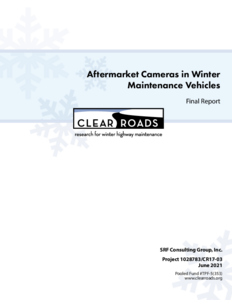Integrating Advanced Technologies into Winter Operations Decisions
Creator
Date Created
2020-12
Report Number
CR17-01
Description
Synthesis on Global Positioning Systems/Automatic Vehicle Location Equipment Used for Winter Maintenance
Date Created
2016-07
Report Number
CR14-01
Description
Mobile Technologies for Assessment of Winter Road Conditions
Date Created
2019-03
Report Number
CR16-03
Description
Remote Sensing in Maintenance Work
Creator
Date Created
2020
Report Number
TRS2005
Description






